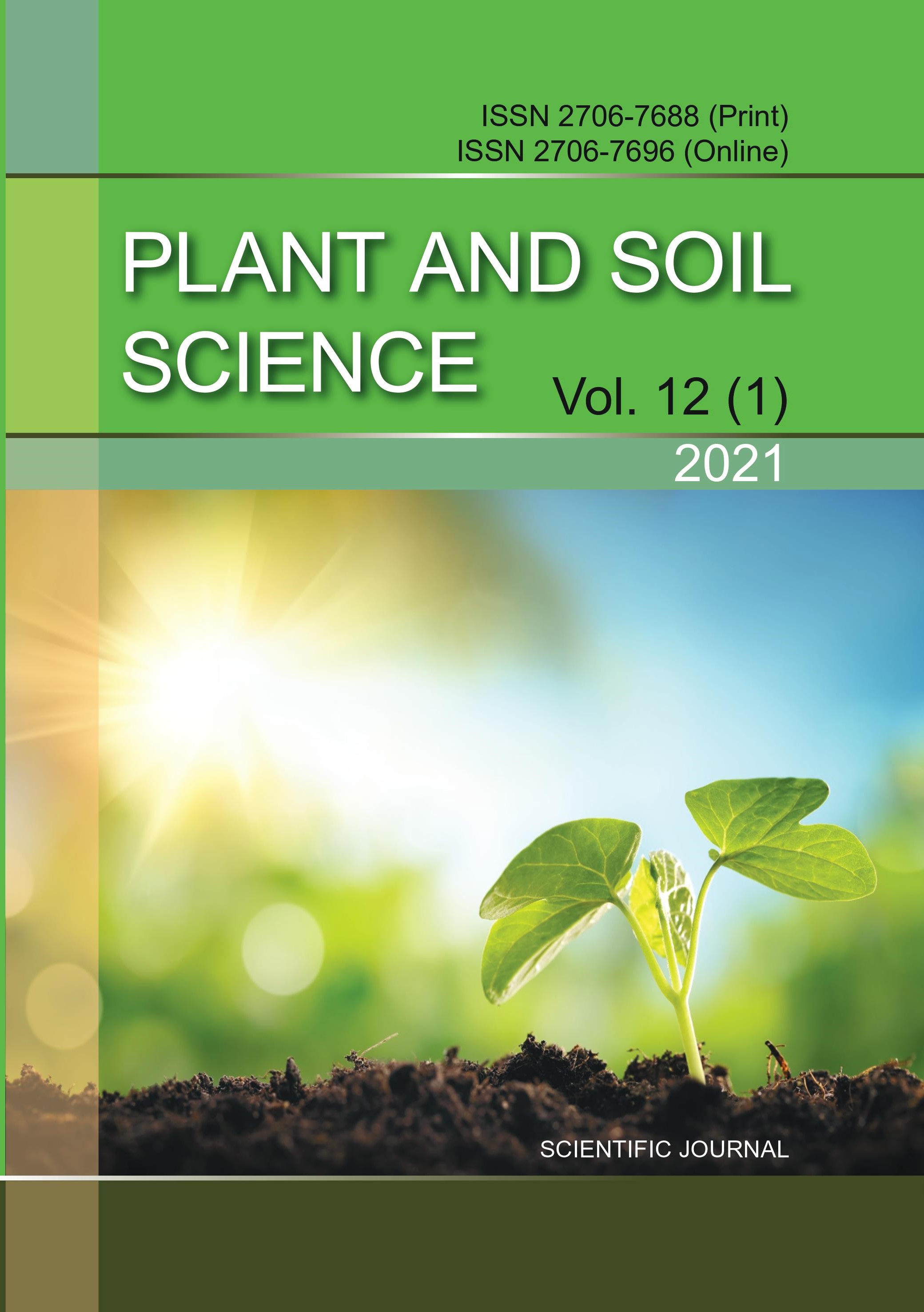Correlation of elements of seed and vegetative productivity of collective samples of white lupine
DOI:
https://doi.org/10.31548/agr2021.01.129Keywords:
correlations, central and lateral racemes, seed weight, number of beans and seeds, number of seeds in one bean, weight of 1000 seeds.Abstract
The aim of the study was to establish the strength and direction of the correlations between the quantitative traits that form vegetative and seed productivity of white lupine. Field, measuring-weight and mathematical-statistical research methods were used. A significant positive correlation of the average strength between seed productivity and such traits as plant height, number of lateral racemes, number of beans from the central and lateral racemes, etc. was established. A strong positive correlation was found with the vegetative development of plants, weak - with the number of seeds in one bean and the weight of 1000 seeds. A significant positive strong correlation of vegetative productivity with such quantitative features as the mass of beans from the central racemes and the mass of leaves and stems was established. A positive correlation of medium strength was found with the number of beans from the central and lateral racemes, the mass of beans from the side racemes, the mass of roots and so on. It was found that the seed productivity of white lupine plants is mainly due to the development of such traits as the number of beans from the lateral racemes, the weight of leaves and roots, the number of seeds and the weight of seeds from the central and lateral racemes. The formation of vegetative productivity primarily depends on the mass of beans from the central racemes and the mass of leaves and stems. The use of established patterns of productivity will help increase the effectiveness of selection of breeding material for the specified parameters.References
Litun P., Kyrychenko V., Petrenkova V., Kolomatska V. (2004). Theory and practice of selection for macro traits. Methodological problems. Kharkiv, 158. [In Ukrainian].
Usyk L. (2009). Characteristics of distinctive morphological traits of winter soft wheat and their use in breeding in the south of Ukraine: author's ref. dis. ... cand. s.-g. science.06.01.05. Kharkiv, 21. [In Ukrainian].
Kobyzieva L. (2006). Protein polymorphism in soybean seeds in the conditions of the Eastern Forest-Steppe of Ukraine. Bulletin of the Poltava State Agrarian Academy, 2, 62-64. [In Ukrainian].
Tryhub O. (2002). Polymorphism of the gene pool of buckwheat in terms of productivity and adaptability in the Forest-Steppe of Ukraine: author's ref. dis. ... cand s.-g. science.06.01.05. Kyiv, 21. [In Ukrainian].
Katsan T. (2014). Peculiarities of buckwheat breeding to increase grain yield by direct index indicators: author's ref. dis. ... cand. s.-g. Science. 06.01.05. Kyiv, 21. [In Ukrainian].
Bulintsev S., Novikova L., Gridnev G., Sergeev Ye. (2015). Correlation of breeding traits that determine the productivity of chickpea (Cicer arientinum) samples from the VIR collection in the conditions of the Tambov region. Agricultural biology. 50, 1, 63-74. [In Russian].
https://doi.org/10.15389/agrobiology.2015.1.63eng
Marchenko T., Vozhehova R., Lavrynenko Yu., Khomenko T. (2019) Variability of the components of the productivity of maize hybrids of different maturity groups under irrigation conditions. Plant varieties studding and protection,15, 3, 279-287. [In Ukrainian].
https://doi.org/10.21498/2518-1017.15.3.2019.181093
Carpici E., Celic N. (2012). Correlation and path koefficient analyses of grain yield and yield components in two-rowed of barley (Hordeum vulgare convar. Distichon) varieties. Not. Sci. Bio, 4(2), 128-131.
https://doi.org/10.15835/nsb427388
Friehiwot A., Bimrew A., LikawenY. (2019). Growth, yield and yield component attributes of narrow-leafed lupin (Lupinus angustifolius L.) varieties in the highlands of Ethiopia. Tropical Grasslands-Forrajes Tropicales, 7(1), 48-55.
https://doi.org/10.17138/tgft(7)48-55
Sozinov A., Khalimullina A. (2019). Correlation-regression analysis of indicators of productivity of white lupine in the conditions of the Kurgan region. Bulletin of the Kurgan State Agricultural Academy, 3, 29-33. [In Russian].
Vitko G., Vanga F. (2015). Evaluation of varieties of narrow-leaved lupine and determination of the correlation between the yield of seeds and elements of its structure, depending on the type of branching. Technological aspects of the cultivation of agricultural crops. Gorki, 39-43. [In Russian].
Dospekhov B. (1985). Field experiment Methodology. Moscow: Agropromizdat, 351. [In Russian].
Kosev V., Vasileva V. (2020 a). Breeding value of white lupin varieties. Journal of Central European Agriculture. 21(2). Р. 409-419.
https://doi.org/10.5513/JCEA01/21.2.2536
Kosev V., Vasileva V. (2020 b). Breeding value of white lupin varieties. Journal of Central European Agriculture,. 21(2). Р. 409-419.
https://doi.org/10.5513/JCEA01/21.2.2536
Zaharova M. V., Lukashevich M. I., Sviridenko T. V. (2014). Variability and interrelation of productivity elements in white lupine varieties. Scientific and production journal "Legumes and cereals", 2 (10). Р. 81-84. [In Russian].
Downloads
Published
Issue
Section
License
Relationship between right holders and users shall be governed by the terms of the license Creative Commons Attribution – non-commercial – Distribution On Same Conditions 4.0 international (CC BY-NC-SA 4.0):https://creativecommons.org/licenses/by-nc-sa/4.0/deed.uk
Authors who publish with this journal agree to the following terms:
- Authors retain copyright and grant the journal right of first publication with the work simultaneously licensed under a Creative Commons Attribution License that allows others to share the work with an acknowledgement of the work's authorship and initial publication in this journal.
- Authors are able to enter into separate, additional contractual arrangements for the non-exclusive distribution of the journal's published version of the work (e.g., post it to an institutional repository or publish it in a book), with an acknowledgement of its initial publication in this journal.
- Authors are permitted and encouraged to post their work online (e.g., in institutional repositories or on their website) prior to and during the submission process, as it can lead to productive exchanges, as well as earlier and greater citation of published work (See The Effect of Open Access).

